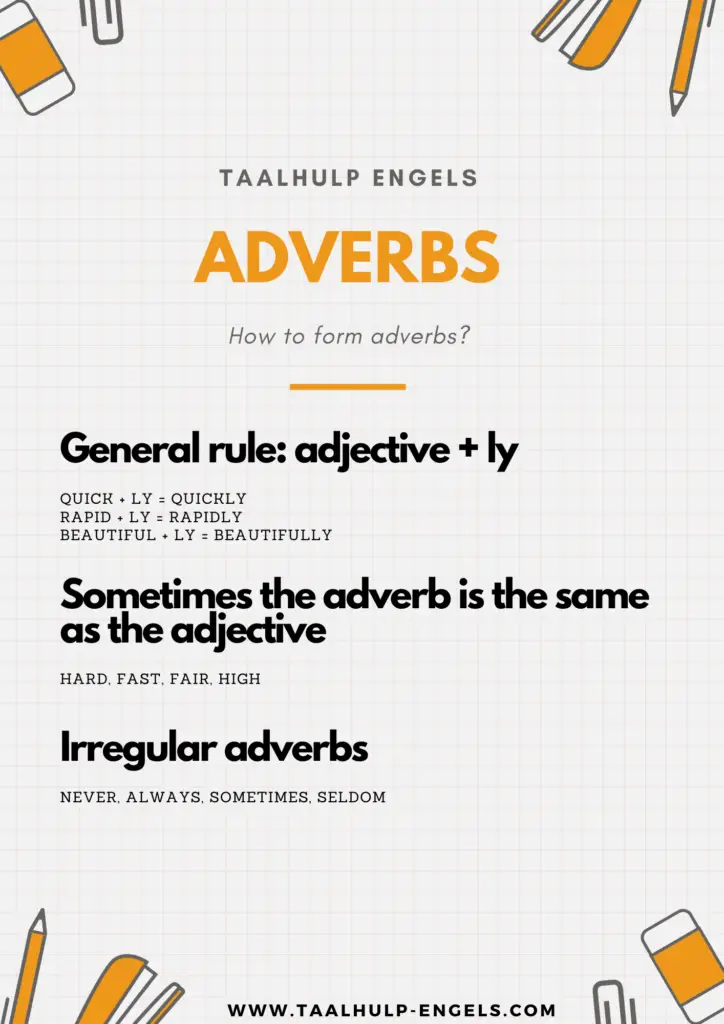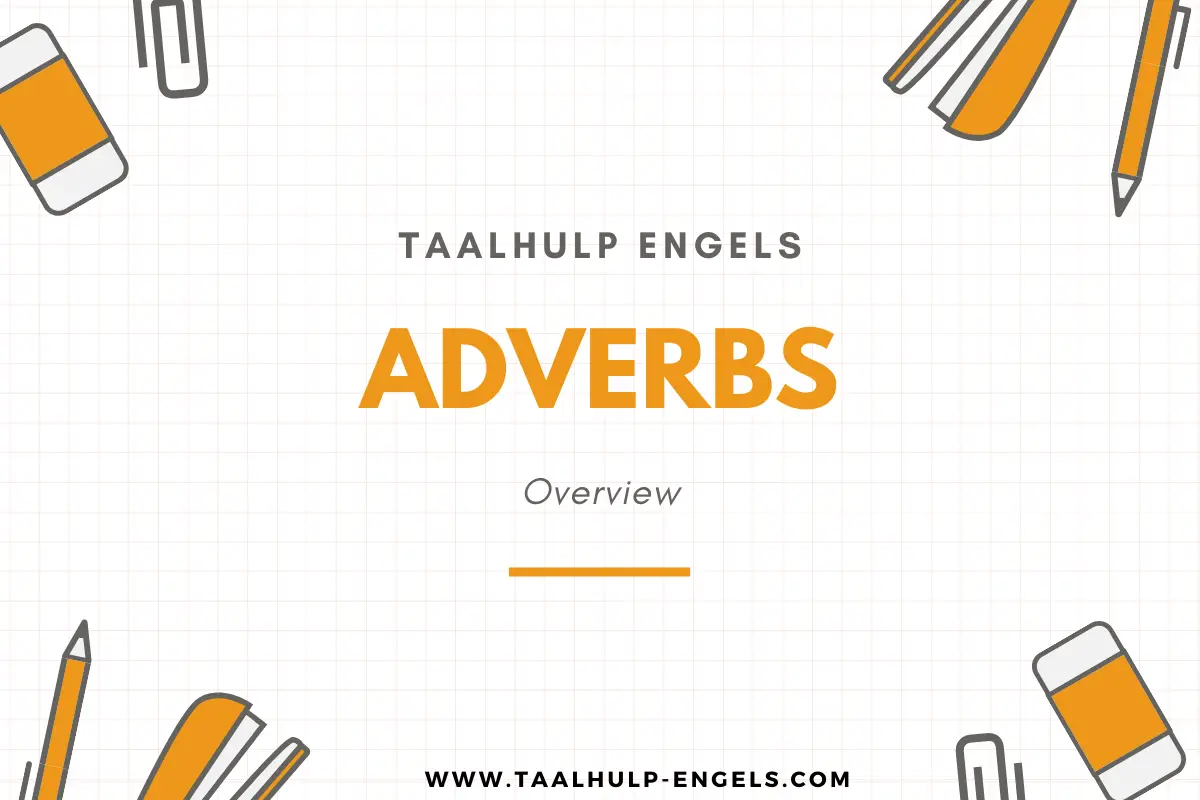In addition to adjectives, adverbs are also important in almost any language. They are used to give more information about an action. With the use of adverbs, you could say someone laughs friendly. In this example, friendly gives more information about the way this person laughs; so you get more information about the verb.
Adverbs are similar to adjectives but very different when it comes to use and form. On this page, you have a full overview of what adverbs are, when you use them and you can also find some examples on this page.

What are adverbs?
Adverbs are words that belong to verbs, adjectives, or other adverbs. These words give more information about the verbs, adjectives or other adverbs in a sentence. Because of these adverbs, it is possible to describe how someone is doing something, for example.
You cannot use adjectives to give more information about verbs, so that is why there are adverbs. The other way around is also true; you cannot use adverbs to talk about nouns. You use adjectives for that.
Why do we use adverbs?
Just like with adjectives, we use adverbs to add a little flavour to the English language. You have a detailed overview below of when you should use adverbs.
Adverbs with verbs
One of the uses of adverbs is to give more information about verbs. Most of the time, these words express how something is done. For example:
| He snores loudly |
| I read fast |
| You eat slowly |
The general rule is to use them when giving more information about verbs, but there is one exception to this rule and that is when you are dealing with ‘linking verbs’. Linking verbs are verbs that describe the state subject and not what the subject is doing.
If you have a linking verb in a sentence, you need to use an adjective instead of an adverb.
| I feel bad |
| My dog looks tired |

Adverbs with adjectives
Adverbs can also be used to give more information about an adjective. This is usually to say to what extent something is present.
| He is very tall |
| She is fairly clever |
Adverbs with other adverbs
A final use of adverbs is to say something about other adverbs. You can even use more than one adverb, but this might seem chaotic.
| He snores very loudly |
| We eat quite slowly |
How to form adverbs
The general rule to form adverbs is adding <ly> to the adjective. For example:
| Adjective | Adverb |
|---|---|
| quick | quickly |
| rapid | rapidly |
| beautiful | beautifully |
| honest | honestly |
This is the general rule, but there are some exceptions. In some cases, the adverb has the same form as the adjective and you need to look at the context to know which one is meant.

If you add <ly> to these adjectives, the meaning changes so you don’t add <ly> to form the adverb. Take a look at the examples below:
| Adjective | Adverb |
|---|---|
| hard | hard |
| fast | fast |
| long | long |
| wrong | wrong |
| fair | fair |
| high | high |
| straight | straight |
Adverbs of frequency
There are also adverbs that can’t be formed by adding <ly> to the adjective. These adverbs are irregular and are used to give more information about how or how often something happens. These are described as adverbs of frequency.
| Adverb |
|---|
| never |
| always |
| sometimes |
| seldom |
| often |
| recently |
| very |
| big |


Exercises
- Adjective or Adverb Exercise 1
- Adjective or Adverb Exercise 2
- Adjective or Adverb Exercise 3
- Adjective or Adverb Exercise 4
- Adjective or Adverb Exercise 5
- Forming Adverbs Exercise 1
- Forming Adverbs Exercise 2
- Forming Adverbs Exercise 3
- Forming Adverbs Exercise 4
- Forming Adverbs Exercise 5


